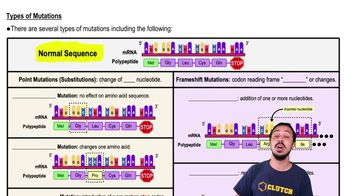If a fragment of a chromosome breaks off and then reattaches to the original chromosome but in the reverse direction, the resulting chromosomal abnormality is called
a. A deletion
b. An inversion
c. A translocation
d. A non-disjunction
 Verified step by step guidance
Verified step by step guidance Verified video answer for a similar problem:
Verified video answer for a similar problem:

